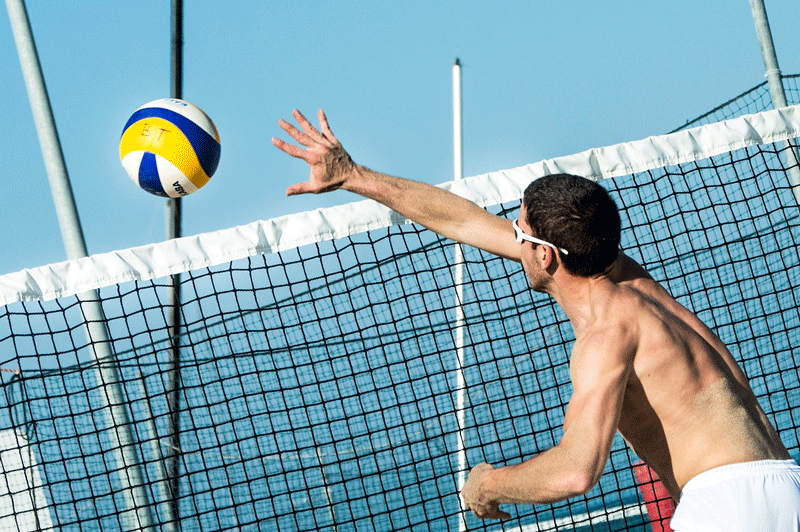What Is A Side Out In Volleyball? 2024
For those new to the game, the term “side out” might raise questions about its meaning, but many people find joy in playing and watching volleyball due to its fast-paced and exciting nature.
Exploring the significance and what is a side out in volleyball, this article delves into its meaning for those unfamiliar with the game’s intricacies.
What Does Side Out In Volleyball Mean?

Describing an old volleyball scoring system that ceased in 1999, “side out” is now defined as ‘any point won by a team when the opponent serves’; however, there is more depth to its meaning than this simple definition suggests.
What Does ‘Sideout’ Actually Mean?
Using the old scoring system, we can make more sense of things, shedding light on understanding “side out” and its significance in volleyball.
What is side-out scoring in volleyball? In volleyball, the ‘side out’ scoring system, which requires a team to serve to score a point, defines the approach wherein a point is gained.
Looking at it from a different perspective, the ‘sideout’ scoring system in volleyball mandated that a team had to serve to earn a point.
Preventing scoring opportunities while the opponent served, the old scoring system in volleyball introduced a constraint that shaped the game’s dynamics
In the context of the old scoring system, points could only be scored by serving teams, potentially requiring an ace or achieving a monster block.
After an incredible defensive play, the rally may conclude with a pin hitter crushing a high ball down the line.
In the old method of receiving a serve, setting the middle, and bouncing the ball, scoring a point was unattainable in any case.
Despite occurrences like that happening frequently, where winning the rally becomes crucial, especially when your opponent is serving, such situations underscore the importance of success in the game.
Teams had to contend with a problem:
Pondering on the challenge of being unable to score points, the question arises: ‘How can I persuade my team to prioritize winning the rally?’
For example, articulating:
‘This point,’ OR
Expressing the sentiment of ‘Let’s score here,’ the team’s.
Deemed somewhat intricate for many individuals, the notion of ‘Let’s stop them from scoring while also giving us the chance to score the next point’ may be perceived as overly complex.
Hence, it was labeled as ‘Let’s side out.’
Although the point remains unclaimed, you are granted the opportunity to assume the role of the offensive team.
Having been resolved, the problem no longer persists.

Isn’t it awkward?
When contemplating how rally scoring operates today—where all rallies are awarded to the winning team regardless of their serving status—the ‘side out’ artifact appears somewhat awkward to observe.
Irrespective of our serving status, the phrases ‘This point’ and ‘Let’s score here’ can still be voiced with conviction.
Furthermore, the side-out implies the potential to conclude the match on match point, a scenario often encountered in most games. This situation becomes a significant relief, especially when holding a narrow lead like 24-23.
Not as swift as it may seem.
Before casting a negative light on ‘side out,’ it’s essential to consider a few benefits associated with it.
Primarily, it offers a universally understood and convenient language that can serve as shorthand for a potentially awkward phrase: “Let’s score the point on serve receive.”
Alternatively, by employing the term ‘side out,’ everyone is well aware of the situation, even if its logical coherence has diminished over time.
How Does a Side Out Occur?
Resulting from various situations, a side out can occur in several instances.
- The serving team loses the point if the serve lands out of bounds.
- The serving team forfeits the point when the serve hits the net and fails to cross.
- A foot fault, where serving team members step on or over the service line, results in the loss of a point.
- Successful defense and return of the ball led to a rally victory for the recei
How Do People Describe Sideouts in Today’s Volleyball?
Today, side out finds diverse applications in various contexts.
- In verb form, the expression becomes: ‘Let’s side out this point.’
- As a noun (object), the statement transforms into: ‘We just need one side out.’
If you are new to volleyball, there’s no need to worry; understanding ‘side out’ becomes accessible by adhering to one straightforward rule.
When the opposing team serves, your team must side out, and it is imperative to accomplish this.
What is Rally Scoring in Volleyball?

Following the rally scoring system in most forms of volleyball today, one team scores whenever the referee blows their whistle to commence the rally unless a replay is requested.
Utilizing rally scoring in volleyball makes matches easier to manage, preventing the prolonged duration that was common when the side-out system was in use.
Expressing their discontent, volleyball fans were upset about this; who would want to endure six hours of watching volleyball? While some may enjoy such lengthy matches, the general public tends to lose interest after the first set.
The rally scoring system contributes to more accurate predictions of volleyball matches, offering practical benefits. Reflecting on personal experiences, instances where a court extends significantly beyond the scheduled time, especially during tournaments, are not uncommon. Originally scheduled for 1 p.m., your match, for example, might be pushed to 2 p.m. due to a tiebreaker in the preceding women’s match.
Similar in essence, side-out scoring, however, brought an additional layer of intensity to the game.
Side Out vs. Rally Scoring
As volleyball has evolved, so has its scoring system. Before the introduction of side-out scoring, volleyball exclusively employed this method. In contemporary volleyball, the prevalent use of rally scoring is evident. This system determines points on each rally, irrespective of the serving team, contributing to a fast-paced and competitive style of gameplay.

Does it take more effort to score side out or while serving?
Ascending the volleyball ladder, teams should leverage their biggest advantage in side outs, where, technically, they have the opportunity to initiate the first attack.
However, it’s crucial to note that serving can indeed become an advantage, particularly when your team possesses an exceptionally strong server.
In high-level volleyball, the typical objective for teams is to achieve a side-out success rate of 60% or higher, with some teams surpassing this benchmark. Consequently, teams would aim to score on serve only 40% of the time or less.
If you are the team captain and need to decide on the coin toss, it’s crucial to bear in mind that the team’s success in side-outs can influence your choice. While this statistic alone may not entirely justify your decision to the coach, especially considering the valid argument for serving first, it can be a factor to consider and use in justifying your choice if no other compelling factors are present.
Conclusion
Pre-1999, “side out” essentially held the same meaning; however, its significance has slightly evolved. Beyond merely awarding a point to your team, it now also grants them the opportunity to serve.
Also Read: What Is A Lift in Volleyball?
